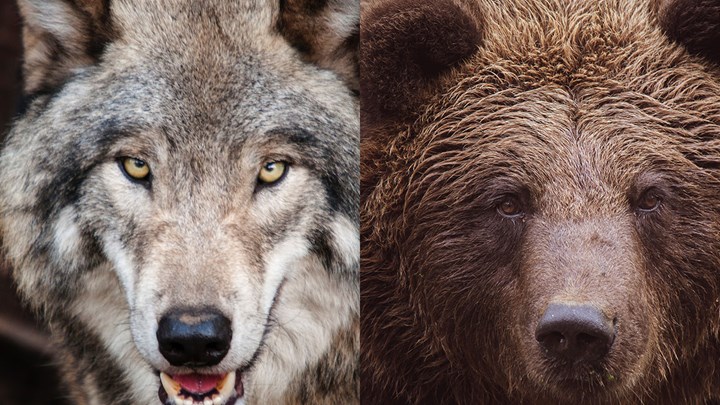
by Cody McLaughlin - Tuesday, May 2, 2023

In a win for all those concerned with wildlife conservation, the House Natural Resources Committee on Friday advanced three key pieces of legislation out of committee to remove long-since-recovered gray wolf and grizzly bear populations from the endangered species list. The bills include:
H.R. 764: The “Trust the Science Act” Delisting Gray Wolves
The proposed legislation requires the Secretary of Interior (SOI) to reissue the 2020 Department of the Interior final rule that delisted gray wolves in the Lower 48. Pursuant to the Administrative Procedures Act, the Trust the Science Act limits judicial review through Congress’ Article I legislative authority to oversee agency rulemaking. This eliminates the risk of an activist judge holding up implementing the scientific decision made by nonpartisan career staff at the Department of the Interior yet again.
In a statement released by her office, Rep. Boebert (CO-3) said, “I am thrilled that the House Committee on Natural Resources trusted the nonpartisan science and passed Rep. Tiffany’s and my bill to finally delist the recovered gray wolf and focus scarce taxpayer funding on endangered species that actually need help recovering. I will never stop advocating for rural Colorado, and I will keep working to protect farmers, ranchers, and their livestock from wolf attacks.” Boebert explained that the science is clear, adding, “The gray wolf is fully recovered, and it is time for the federal government to get out of the way and allow state and tribal wildlife agencies to manage this species.”
For background, the recovered gray wolf population was first listed 55 years ago in 1967 and is sitting at 6,000 wolves—just shy of 10 times the initial agency recovery rule of 650 wolves—in addition to the 11,000-plus wolves in Alaska and 30,000 in Canada. As tracked by this NRA website, after the Trump administration delisted the wolf in 2020, the Biden administration signaled early support in 2022, after which anti-hunting extremist groups sued, resulting in an activist judge unilaterally relisting the wolves.
H.R. 1245: The “Grizzly Bear State Management Act of 2023” Delisting Greater Yellowstone Ecosystem Grizzly Bears
Proposed by Wyoming’s At-Large Congressional District Rep. Hageman, the move directs the SOI to remove grizzly bear populations in the GYE, which spans 22.5 million acres in Montana, Wyoming and Idaho and centers around Yellowstone National Park (YNP).
In a statement released by her office, Rep. Hageman (WY-At Large Congressional District) said, “I am thankful to my colleagues on the Natural Resources Committee for their support for the delisting of the Greater Yellowstone population of grizzly bears. The grizzly bear has been listed as threatened (but not endangered) since 1975, and its original recovery goal was 500 bears.” With nearly 1,100 bears now inhabiting the GYE, she explained, “The population of bears has become so great that they now pose a serious and deadly threat to people and livestock in Wyoming.”
As hunter-conservationists recognize, the goal of the ESA for these bears has clearly been met so management of the species should be returned to the state of Wyoming. Instead, activist courts and agency bureaucrats have been permitted to block sound species management.
“I appreciate the support of my House cosponsors, Rep. Ryan Zinke, who actually did attempt to delist the grizzly bear during his service as Secretary of the Interior, and Rep. Matt Rosendale,” Hageman added. “I look forward to seeing this legislation passed in the House of Representatives and taken up by the Senate where Senator Lummis has already introduced a companion bill.”
Originally listed in 1975, the GYE population was delisted twice before in 2007 and 2017. Each time, the delisting was blocked by activist judges responding to lawsuits pushed by anti-hunting extremists. The overpopulated bears, predictably, have also been the subject of numerous bear attacks and other negative bear-human interactions. Attacks by the GYE bears reached an all-time high in 2020 with seven recorded in the GYE and broke that record again just two years later in 2022.
H.R. 1419: “Comprehensive Grizzly Bear Management Act of 2023” Delisting Northern Continental Divide Grizzly Bears
In an additional piece of grizzly bear legislation, Rep. Matt Rosendale (MT-02), also an original co-sponsor of Hageman’s grizzly bear bill, is sponsoring the bill to remove the separate Northern Continental Divide Ecosystem Grizzly Bears from ESA protections, as well.
In a statement released by his office, Rosendale said, “Since grizzly bears were first listed under the Endangered Species Act, they have exceeded the set recovery targets. Now there are over 1,100 grizzly bears in the Northern Continental Divide Ecosystem alone. I’m grateful that my colleagues on the House Natural Resources Committee recognize that the federal government must allow Montana to manage our grizzly bear population.”
The Northern Continental Divide grizzlies are the largest population of grizzly bears in the continental United States. As this NRA website has tracked, the bears have increasingly been the subject of negative bear-human interactions, including a predatory attack on a camper in 2022.
Please stay tuned as news and updates on the three bills unfolds.
About the Author
Cody McLaughlin is a conservationist and conservative thought leader on public policy issues including hunting, fishing, gun rights, free-market tax and wage policy and the environment. He works as a GOP consultant for conservative political causes, managing clients’ digital communications and online presence, serves currently on the board of the Alaska Outdoor Council (the Last Frontier’s state NRA Affiliate) and is a former board member and lead spokesman of the New Jersey Outdoor Alliance, helping to represent the state’s 1.2 million sportsmen in the political arena.
E-mail your comments/questions about this site to:
[email protected]
Proudly supported by The NRA Foundation and Friends of NRA fundraising.
